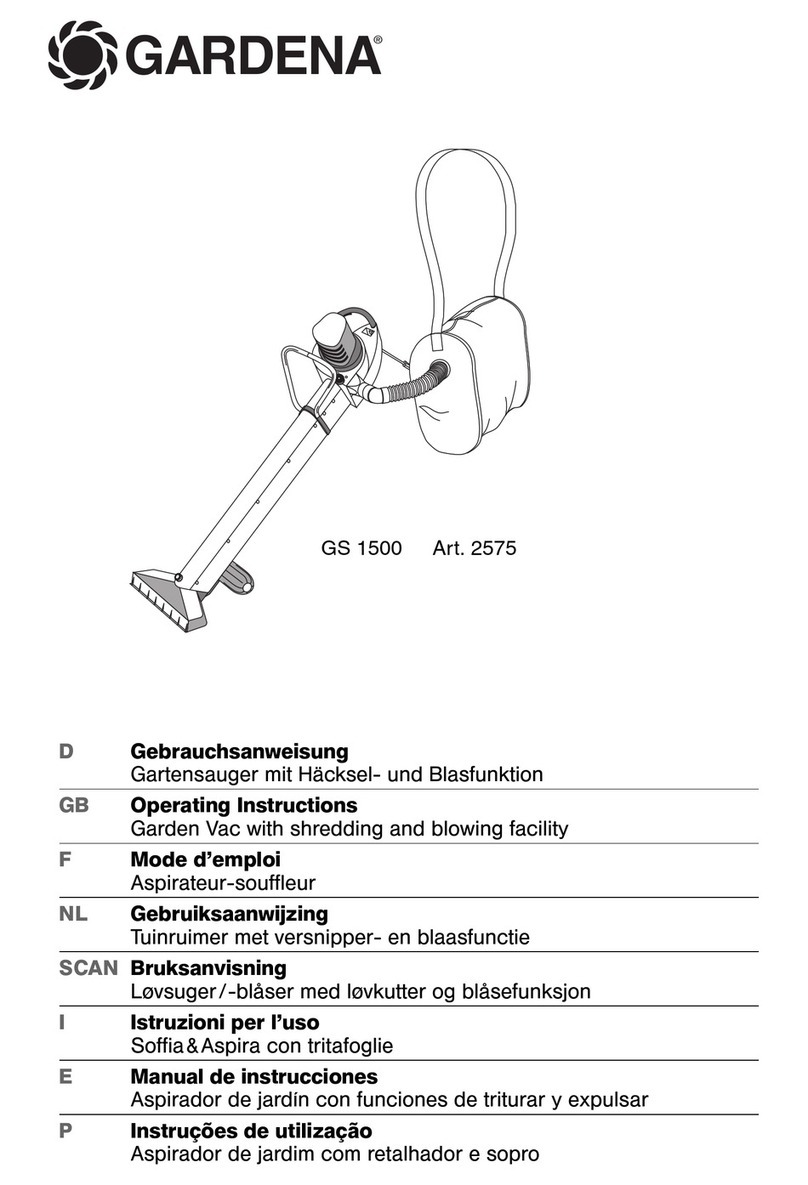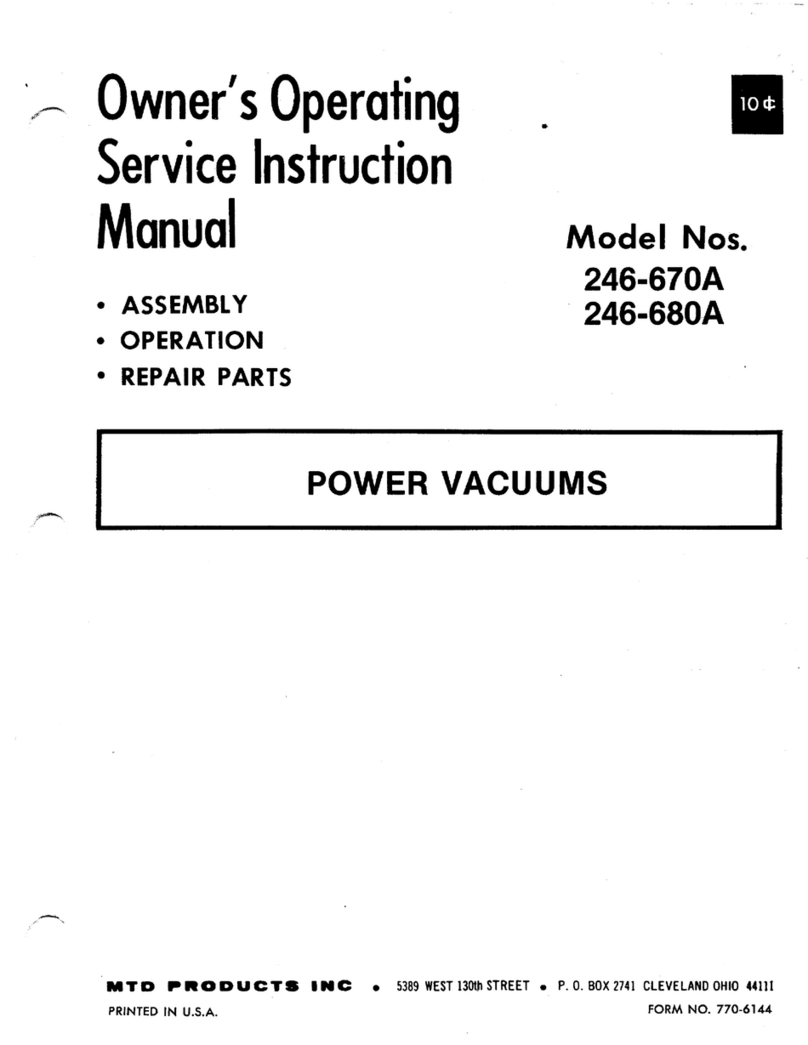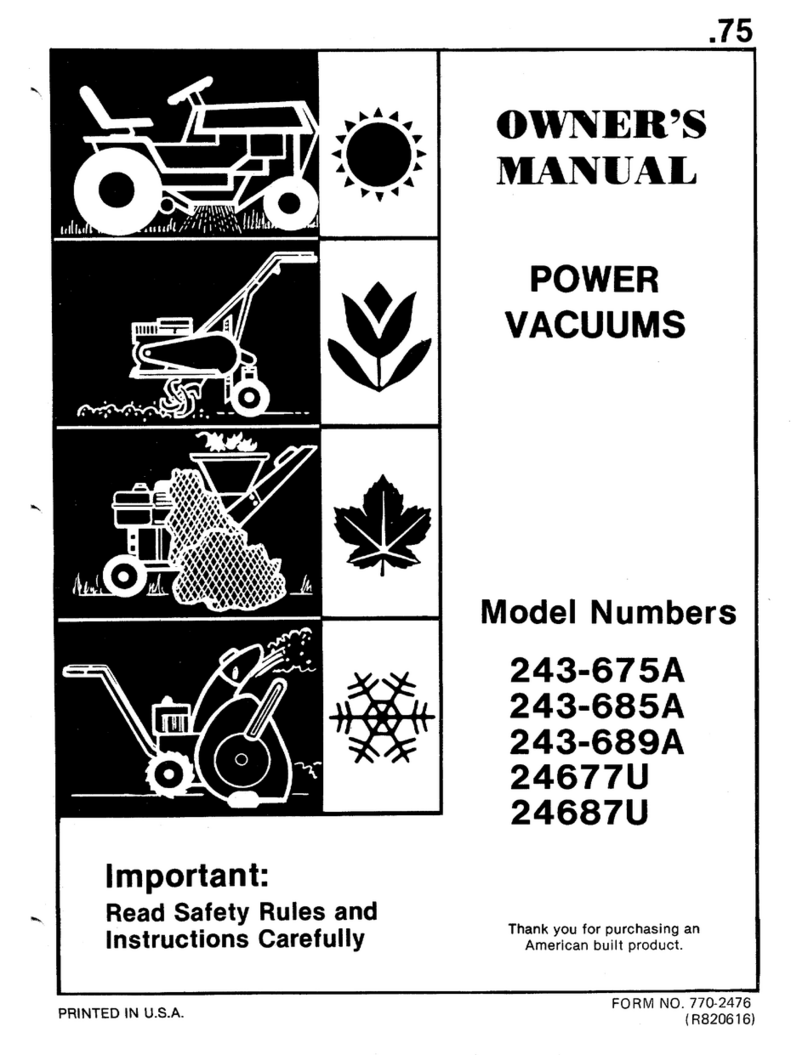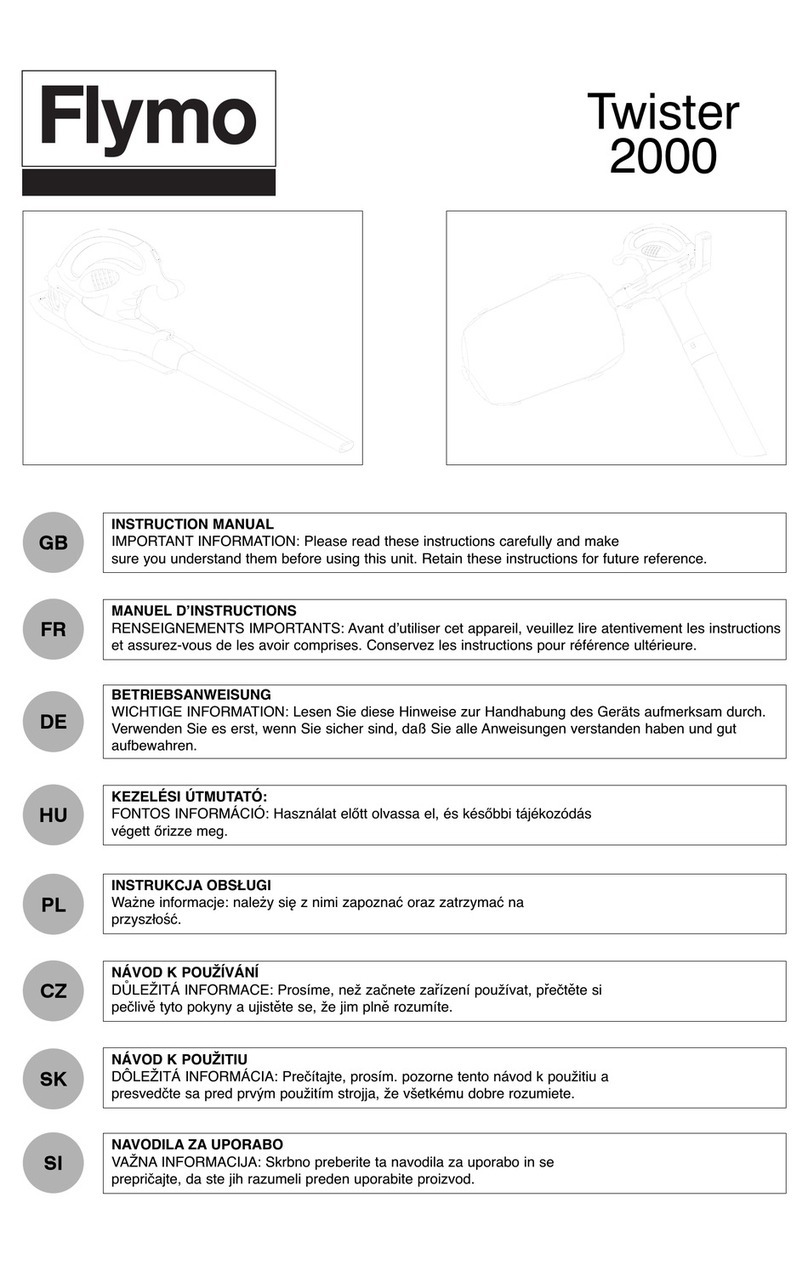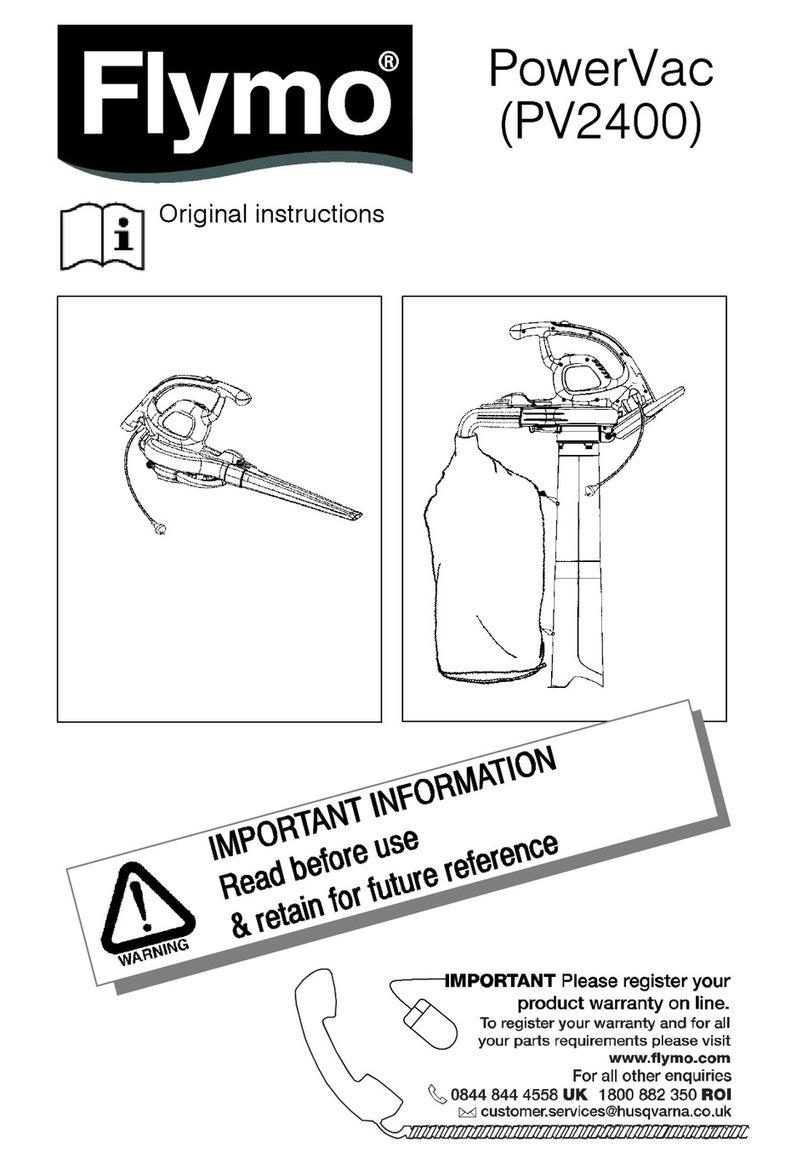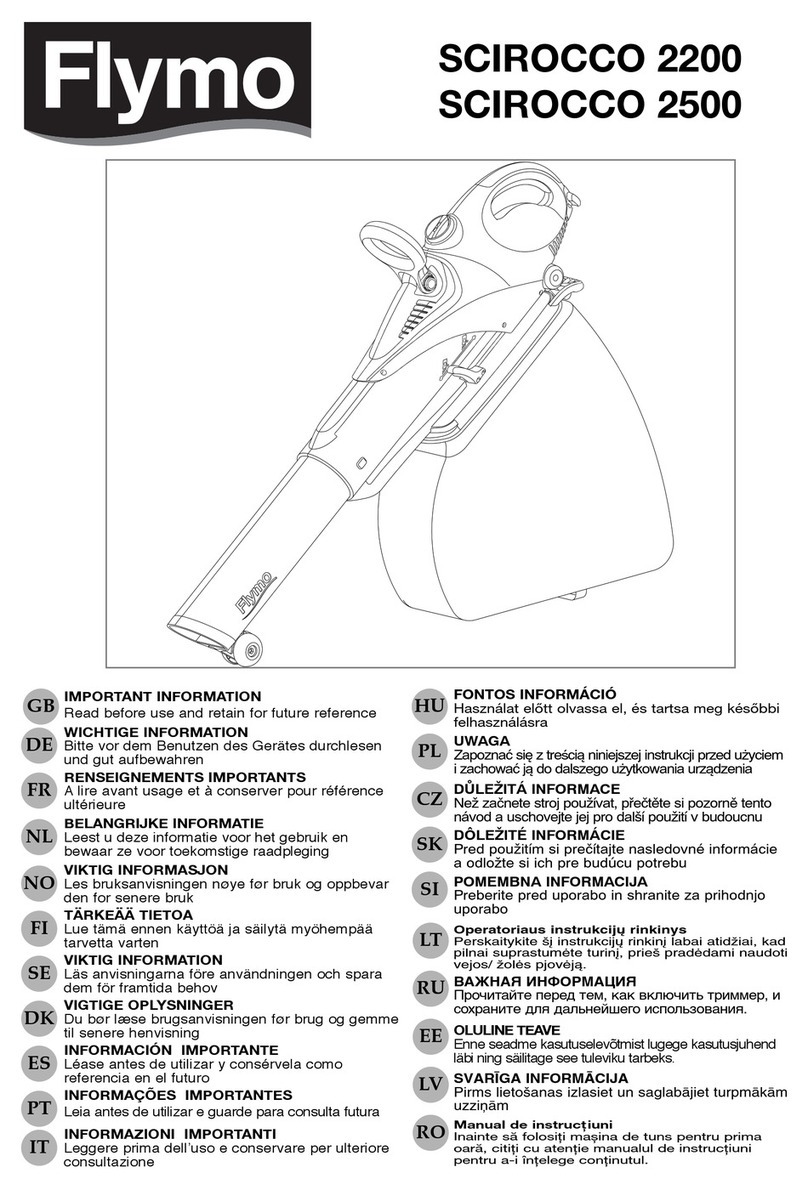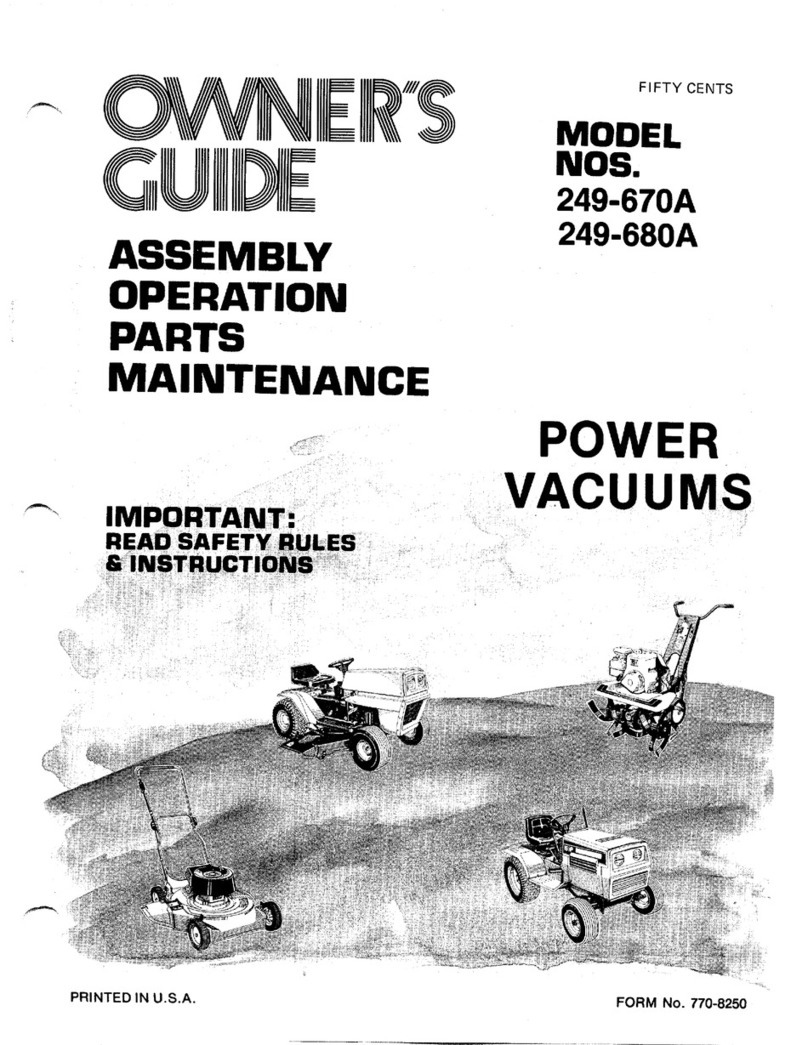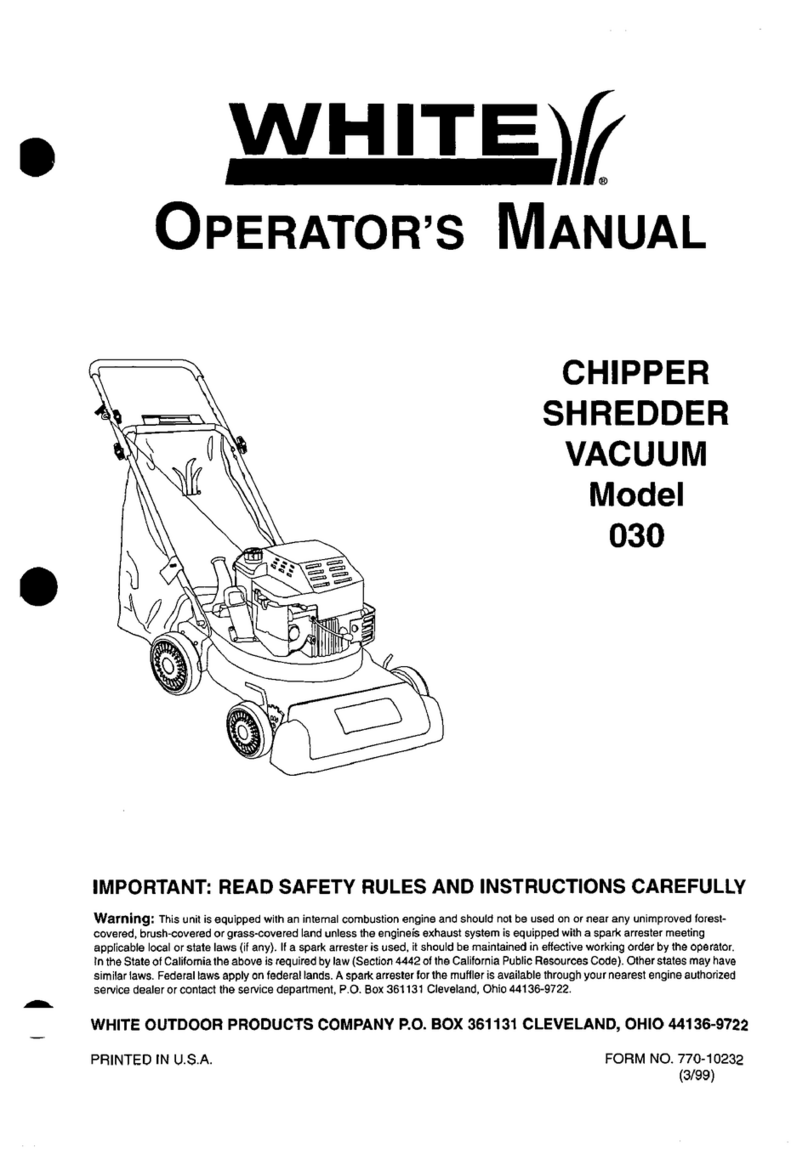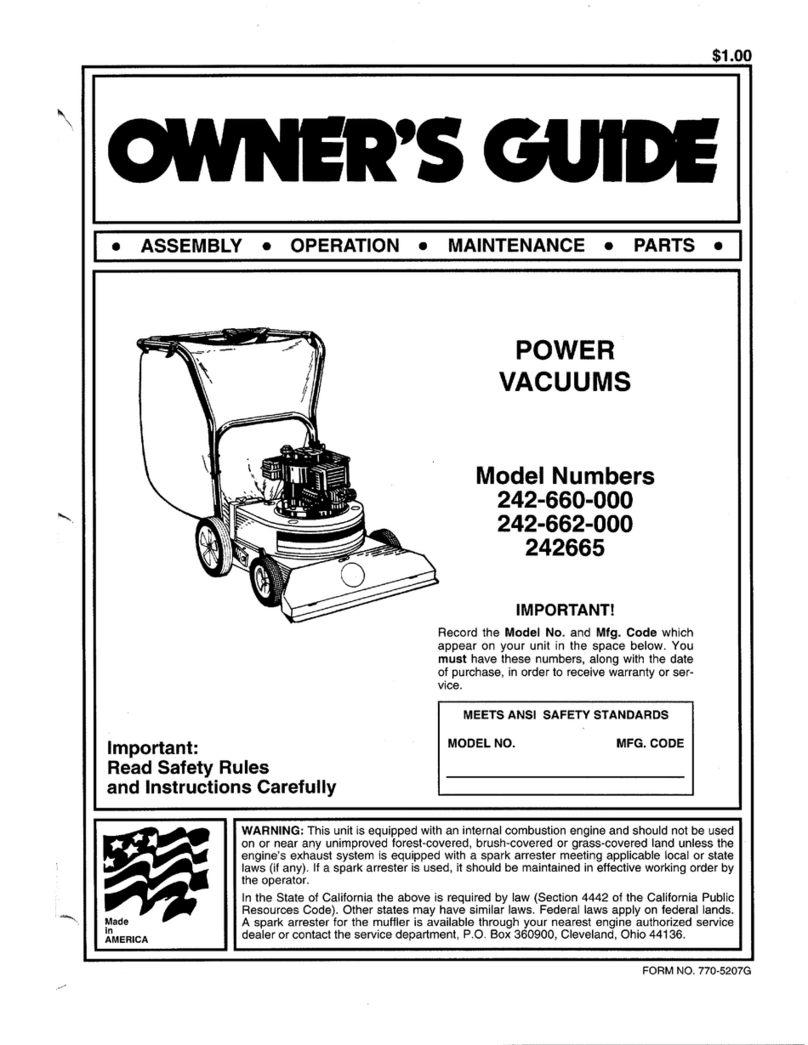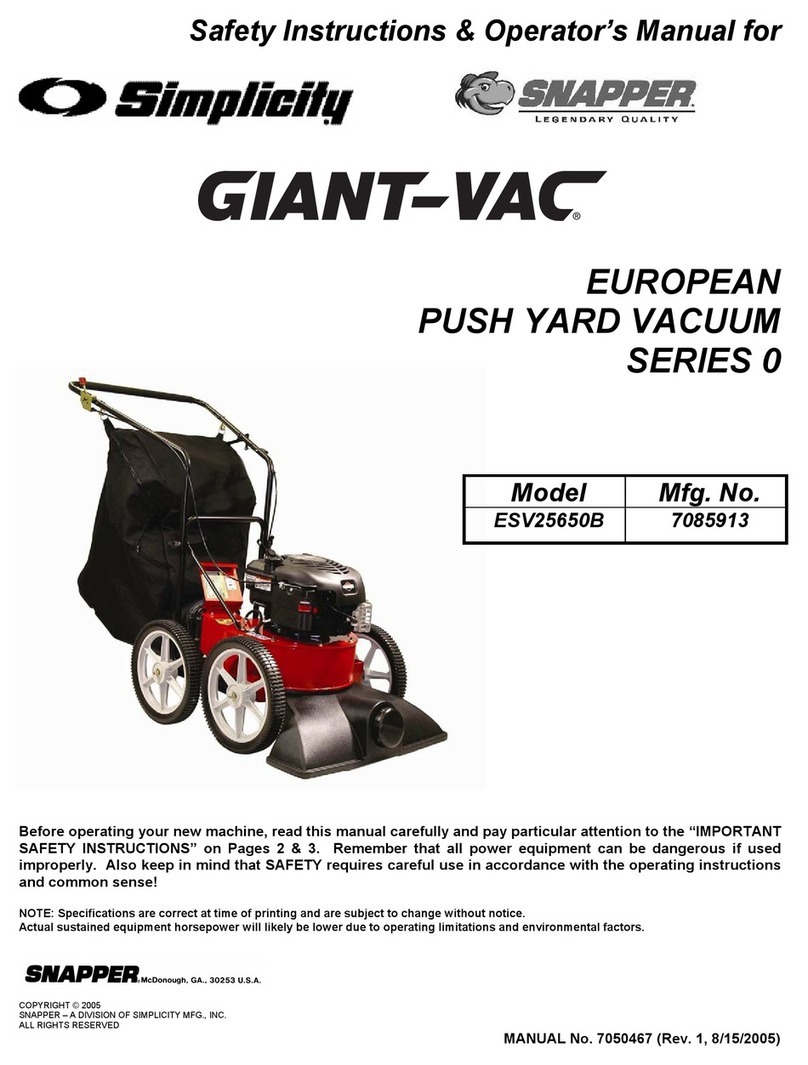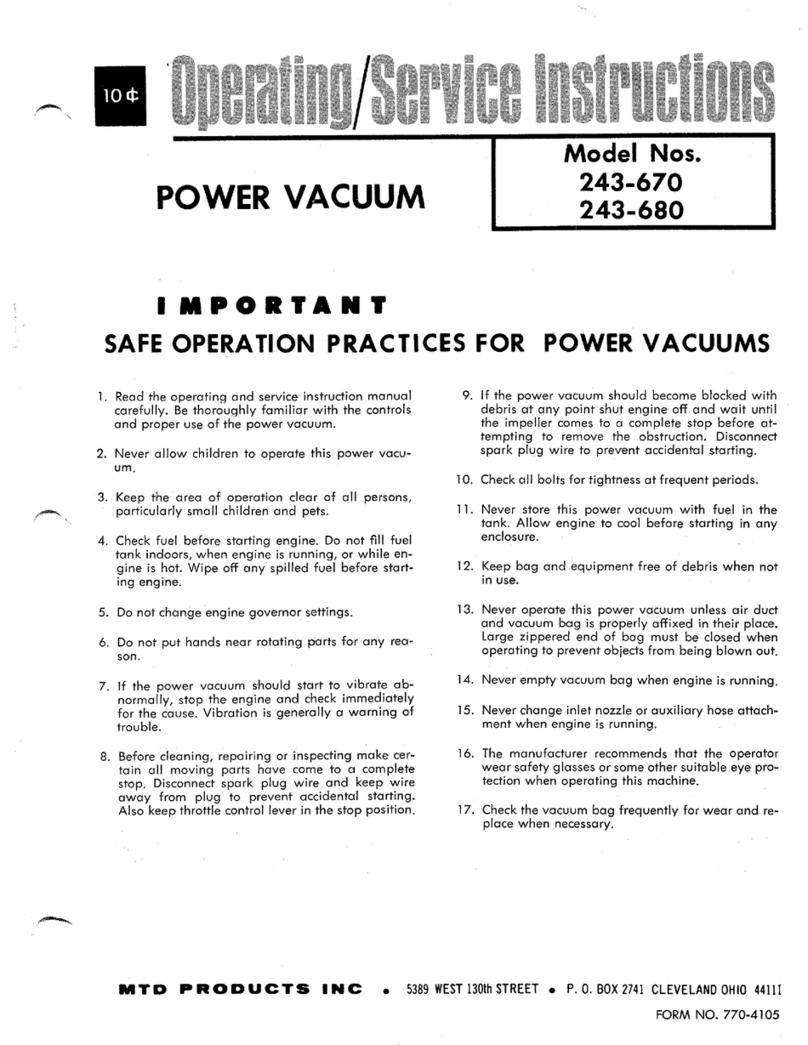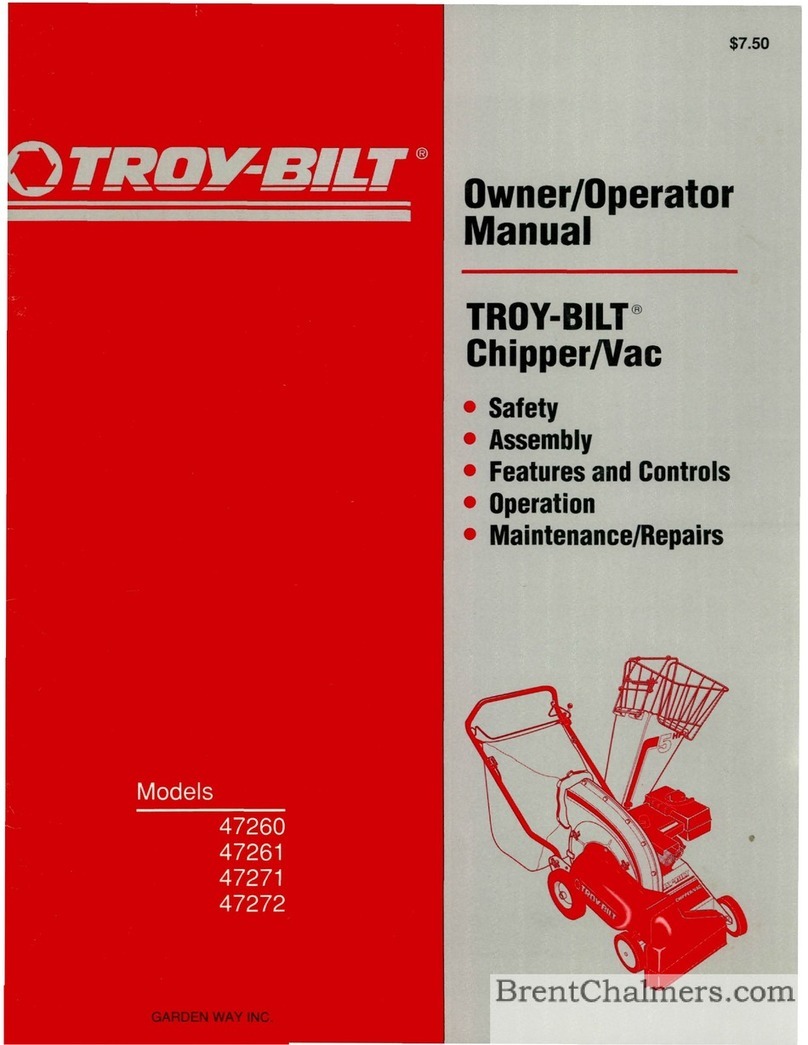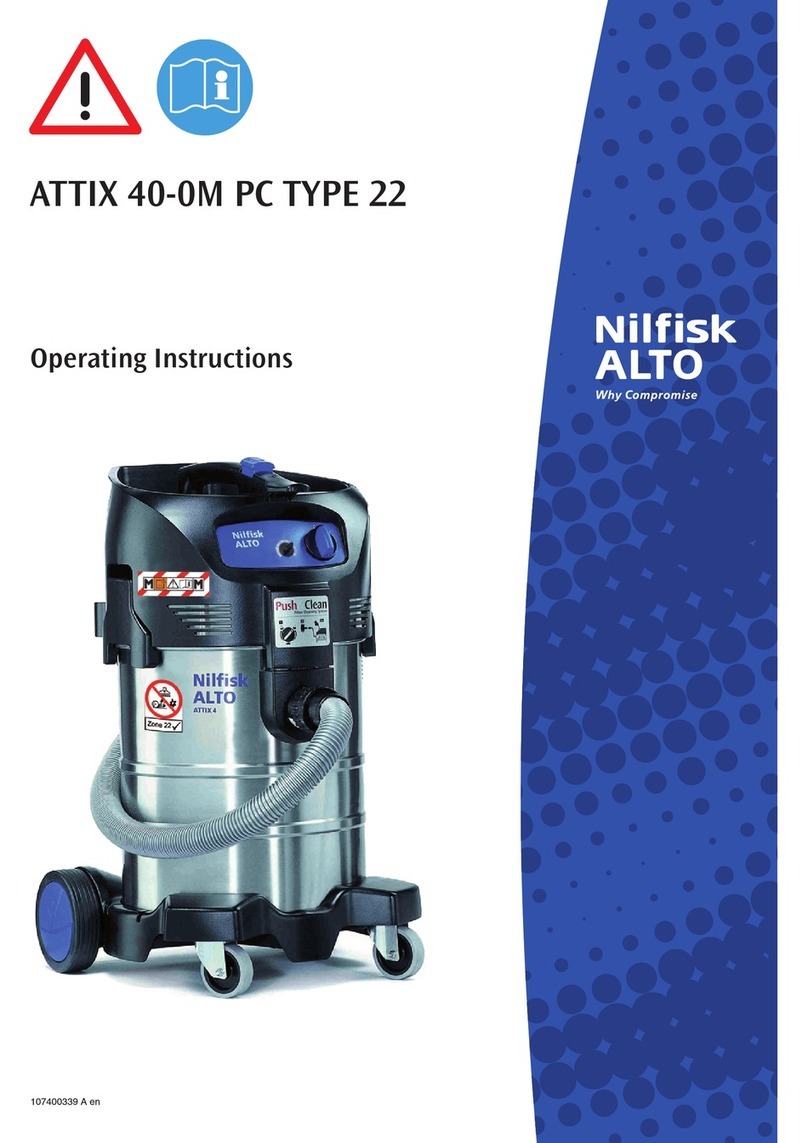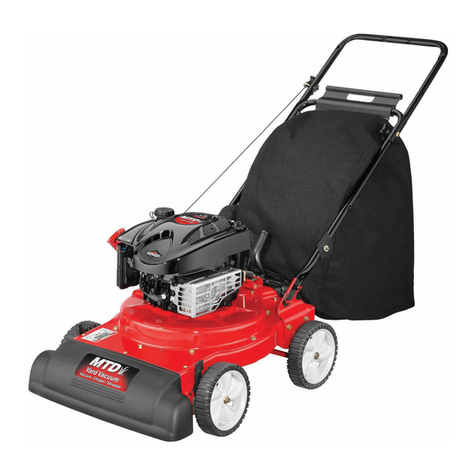5
If damaged, have the power tool
repaired before use. Keep all
cooling air inlets clear of debris.
Many accidents are caused by poor-
ly maintained power tools.
g) Use the power tool and accessor-
ies in accordance with these in-
structions, taking into account the
working conditions and the work
to be performed. Use the product
only in daylight or good artificial
light. Use of the power tool for oper-
ations different from those intended
could result in a hazardous situation.
5) Maintenance and storage
Have your power tool serviced by a
qualified repair person using only
identical replacement parts. This will
ensure that the safety of the power tool
is maintained.
-- Keep all nuts, bolts and screws
tight to be sure the product is in a
safe working condition.
-- Replace worn or damaged parts for
safety.
-- Use only genuine replacement
parts and accessories.
-- Inspect the debris bag regularly.
If the debris bag becomes worn or
damaged, replace.
-- Store in a cool dry place and out of
reach of children. Do not store out-
doors.
Blower safety warnings:
SInspect the area before using the
unit. Remove all debris and hard
objects such as rocks, glass, wire, etc.,
that can ricochet, be thrown, or
otherwise cause injury or damage
during operation.
SNever run the unit without the proper
equipment attached. When used as a
blower, always install a blower tube.
Use only recommended attachments to
prevent personal injury.
SDo not use blower near leaf or brush
fires, fireplaces, barbecue pits,
ashtrays, etc. Proper use of the
blower will help avoid spreading fire.
SNever place objects inside the
blower tubes; always direct the
blowing debris away from people,
animals, glass, and solid objects
such as trees, automobiles, walls,
etc. The force of air can cause rocks,
dirt, or sticks to be thrown or to ricochet
which can hurt people or animals, break
glass, or cause other damage.
SNever use for spreading chemicals,
fertilizers, or any other substances.
This will prevent the spreading of toxic
materials.
Vacuum safety warnings:
DStop the motor and disconnect the
extension cord before opening the
air inlet door or attempting to insert
or remove the vacuum tubes. The
motor must be stopped and the impeller
blades no longer turning to avoid
serious injury from the rotating blades.
DInspect the area before using the
unit. Hard objects can be thrown
through the collection bag or the
housing and become dangerous
missiles which can cause serious injury
to the operator or others.
DDo not vacuum stones, gravel, metal,
broken glass, etc. Proper use of the
unit will reduce possible personal injury
and/or damage to the unit.
DDo not attempt to vacuum water or
other liquids. Water or other liquids
entering a power tool will increase the
risk of electric shock.
DNever run the unit without the proper
equipment attached. When used as a
vacuum, always install vacuum tubes
and collection bag assembly. Make sure
the collection bag assembly is
completely zipped when unit is running
to avoid flying debris. Use only
recommended attachments.
DDo not vacuum discarded matches,
cigars, cigarettes, or ash from
fireplaces, barbecue pits, brush piles,
etc. Avoid situations which could set the
collection bag on fire. To avoid
spreading fire, do not use blower near
leaf or brush fires, fireplaces, barbecue
pits, ashtrays, etc.
DAlways use the shoulder strap when
vacuuming. This will help maintain
control of the power tool.
DCheck air intake openings, elbow
tube, and vacuum tubes frequently,
always with the unit stopped and the
power source disconnected. Keep
vents and tubes free of debris which
can accumulate and restrict proper air
flow. Do not use with any opening
blocked. Keep free of dust, lint, hair and
anything that may reduce air flow.
